You’re listening to Burnt Toast!
I’m Virginia Sole-Smith, and today my guest is romance author . 🔥
Nisha is a young adult and adult contemporary romance writer whose books have been included in “Best Of” lists by the New York Times, Entertainment Weekly, Cosmopolitan, The Washington Post, Time Magazine and more. When she’s not writing about people of color experiencing radical joy or teaching about inclusivity, Nisha’s hitting the books for her PhD in English and social justice. Nisha is the author of an awesome trilogy called If Shakespeare Were an Auntie, the third installment of which just came out last week. It’s called Marriage & Masti and it’s an absolute delight!
So we’re going to hear a bit more about Nisha’s own writing in this episode. But the main reason I asked her to come on is to discuss one big question: What is happening with bodies in romance novels?
The romance genre has always been a big business, and one of the most reliable ways for women to make money as writers. But in recent years, it has delightfully exploded in terms of diversity of all kinds. Of course, this has been uphill work. So we’re going to get into why we are both seeing more fat rep in romance—but why you’ll also still encounter so many conventionally beautiful, thin white heroines. And she also answers the question: Why are there so few fat male love interests?
You can get all of Nisha’s books —and all the other romances we discuss in this episode! —through the Burnt Toast Bookshop. Don’t forget, you can always take 10 percent off that purchase if you also order (or have already ordered!) Fat Talk from Split Rock Books! (Just use the code FATTALK at checkout.)
PS. If you enjoy today’s conversation, please tap the heart on this post — likes are one of the biggest drivers of traffic from Substack’s Notes, so that’s a super easy, free way to support the show!
Episode 158 Transcript
Nisha
So I live in the Philadelphia suburbs. And I’m also South Asian, the eldest daughter of immigrant parents. I spent about 10 years of my life in corporate as a DEI professional. And now I just write, and I study, because I’m back in school to get my PhD in English and social justice as well.
Virginia
We’re going to talk about bodies and romance novels today. To give a little backstory, I am somewhat of a recent convert to reading romance—within the last five years, I would say. Other than reading a few Harlequin romances and VC Andrews books as an 11-year-old and having my mind blown. Oh and then I definitely had a JD Robb phase in my twenties. I was really into that whole futuristic cop, hot billionaire husband plot line for a while…
But I kept putting these books down because I did not feel myself represented. They were fun, and they were a hot read, but it was like okay, it’s great that all these skinny pretty people are having great sex. It never really resonated with me.
And then I read Talia Hibbert. And that was my first moment of, Oh, okay, this can be something really different. It was such a revelation, as a fat woman, to read a book centering the pleasure of fat women. So I would love for you to talk to us about how romance has traditionally approached bodies, and how you see that evolving.
Nisha
That’s a really good question. I think before I answer it, I want to give a little disclaimer. I am a person who is in a fat body, I’ve been fat my entire life. And I have disordered eating patterns. Because, you know, doctors are great at making you feel terrible about the bodies that we’re in. And I’ve been on a fertility journey, which all of you know, anyone who’s also experienced any sort of infertility in the US specifically, a lot of the medication they give you can amplify a lot of the medical concerns that often are associated with individuals in larger bodies. So that’s the first disclaimer.
The second is, as a writer, there have only been two books in my repertoire where I have fat bodies on page. And a lot of it is not necessarily me writing thin characters versus fat characters, a lot of my characters just aren’t described in a particular way.
Virginia
I noticed that.
Nisha
It was not intentional at first, but I’ve become more intentional about the way that bodies are presented in my own work. I think that’s important for me to level set before I answer the question.
But in terms of the history of romance, I’ve been in the industry for quite a bit of time. My first book was published in 2018. But I have a history in the industry and the history of romance is something that I’m very familiar with. And so we have to look at where it started, right?
The romance industry today has its roots in Europe, specifically in the UK. It then went from these category romances in the UK to Harlequin in Canada. And then we see the boom of published romances in the US.
So romance is very Eurocentric. And Eurocentric ideologies about bodies are often rooted in racism. History is not linear, there are multiple ways of looking at history. But the one that resonates with me the most is that this colonial influence in Romance also has historically seen Black and Asian and Latinx bodies—that are larger or that are not the Eurocentric body types—as being non-conforming, ugly, lazy…all of the stereotypes that you find associated with fatness. So I think that we have to acknowledge the colonial roots of romance.
The other piece of it is that we have to see who’s making the decisions about romance. One of the most recent reports about representation data showed that still over 70 percent of the people making decisions about which books get published are white. And a vast majority of the leadership in publishing are men. So we are looking at white men, straight white men in a lot of situations, who are making decisions about romance from the very top. This influences bodies and the way that bodies are portrayed on the page. And this is influencing the way that finance and marketing work, and all the way down to whether editors are able to purchase books with characters that have larger bodies in them too.
Virginia
That is so exasperating, especially when you consider that the majority of romance writers and readers are women. And yet, this male power system at the top is is dictating what women are publishing and what women are reading. I just want to name that imbalance. That feels like an important piece of this.
Nisha
It is. On the other side of it, we can’t just point the finger at publishing. We can’t just point the finger at colonialism. There are also readers who will say that they just don’t understand fat bodies. So we have this societal response of, “I don’t find that attractive, I don’t understand how that’s attractive.” That’s also a really terrible terrible take that is still prevalent today.
Virginia
If readers are conditioned to think certain bodies are attractive and certain bodies are aspirational and then you combine that with the fantasy element of romance, readers are gravitating towards romances that perhaps that give them this fantasy. And it matters less about whether they feel like their own bodies are being reflected. But that breaks my heart! That feels really sad.
Nisha
I’ve always said that romance is having a conversation with the world around it. It’s a back and forth. It’s never really a reflection of the world, but it’s also not a predictor of the world to come. It’s this back and forth. As romance progressed, we did start to see the rise of different body types in romance.
But I specifically remember, as a voracious reader in the 90s, the books that had fat bodies in them, it was often a woman who was ashamed of her fat body. And this shame came from how they didn’t fit in with the society around them and how the hero had to be the person to be like, “I still find you beautiful anyway.” There is a residual effect of that sometimes still, in our genre. In the 90s, it was a thing.
Virginia
Jennifer Weiner’s Good In Bed is the classic example of that. It was a hugely revolutionary book, in many ways. And, it is a woman being told by a man that her body is acceptable.
Nisha
And I will say, I think that with this influx, the acceptance of marginalized stories, of queer stories, of authors who are writing characters who are older—which is also very important here—we’re getting stories about bodies that are outside of the traditional white, European body that was traditionally accepted in romances. I don’t think we’ve really reached a space of full acceptance yet, but we are seeing so many more books every day that have stories of positive representation of fatness on the page in romance. I wish there was more, but from where we used to be, there is definitely more now.
Virginia
I’m curious to hear your thoughts on the male love interests. Because one trend I’ve noticed is romance heroines maybe becoming more diverse in terms of body size, but the men—there’s a range, right? And maybe they’re tall and lanky, or maybe they’re broad and muscular, but—they’re not fat. And that’s interesting to me. I mean, especially in light of the recent cultural conversation around season three of Bridgerton, which very much was that plot line you were talking about, where the thin, hot love interest is telling the perceived-as-fat woman, “look how beautiful you are.”
So there’s still some of that embedded in there, right?
Nisha
I always think that Hollywood is behind in the way that publishing is dealing with certain topics. Like 10 years ago, I was getting the whole like, “Oh, our publishing house already has a South Asian author.” And now Hollywood is doing that, too. Like, we already have our South Asian story. So hopefully Hollywood will also change, sadly.
With male love interests, I think we’re we’re primarily talking about Cisgender heterosexual romances. I think queer romances have done an incredible job of being way more accepting and open to marginalized identities. I think cisgender heterosexual romances with a lot of whiteness still, are where we’re finding this traditional male love interest model.
So, back in the day, Nora Roberts—who is, like, Queen Nora, right? At one point in the late 1990s and early 2000s, she was selling a book every eight minutes. She has over 300 books published.
Virginia
Icon. Who is JD Robb, just to call back to my previous endorsement. She was not just Nora Roberts, she was this whole empire of Nora Roberts.
Nisha
But she has this really famous quote that stuck with me for a long time, because it made me feel really—not icky, but it made me feel a certain type of way. People would ask her, “Why are all of your love interests super hot and attractive?” And Nora said something like, “Well, it’s my fantasy and in my fantasy, I don’t want to write about people who I find ugly. I want to write about people who I find attractive.”
And okay, so there’s, there are a lot of problems with this statement. And, there’s one kernel of really uncomfortable truth.
But the problems, first, are that Nora is claiming there’s this default standard of hotness. And that default level of hotness or understanding of hotness is that it doesn’t include people with features that may or not be traditionally European, right? But the uncomfortable truth is that authors really have the power of driving what’s conventionally attractive in their stories and a lot of the narratives that they write. And they can do this by avoiding certain words that can specifically indicate what is a traditionally hot body type. But until we see more authors who are embodying these differences, and who are really writing with care and concern, we’re defaulting to a certain type of hotness.
And as an author myself, I also have this belief about is what is traditionally beautiful to me, and it’s different than a lot of the the hotness that exists on page, right? My heroes are South Asian. They have dark skin, they are very hairy and broad chested, very chiseled jaw and a little beaten up looking. That is just what I like. So I also have to recognize that there are certain conventions about South Asian attractiveness that I am also sewing into the fabric of my narratives, which I have to address. This is something that I wish more authors talked about. It’s definitely an ongoing discussion in romance.
Virginia
Well and it’s just interesting to think about all the intersections you were laying out before. If we’re thinking about those male publishers at the top of the pyramid, thinking about what they’re selling to women. There’s what they think women want. That whole concept is flawed. And then there is also this need for authors to reflect on their own biases and their own preferences and what they’re putting out.
And I think there often is a piece of that old 90s narrative of a thin hot guy being in love with a fat woman somehow validates the fat woman’s body. Even if the story no longer centers on him bringing her up from the pit of despair. We’re still seeing a layer of that play out in books. When you have the fat protagonist, and then the thin male love interest, that’s how we validate this woman’s body. That’s how we make her beautiful. There’s just a lot to tease out there.
I don’t envy you all having this as a job and needing to think about what’s hot and also like, what does it mean that it’s hot? Like, what am I bringing to that?
Nisha
I think it’s part of a larger conversation about literary citizenship, about representation, which I don’t think the industry is having. I don’t think that we’re spending enough time talking about it. So as literary citizens, what is our responsibility for representation to the members of our publishing community and our readership? How are we responsible to our readers in the way that we are talking about bodies? About disability, about race, about gender and sexuality? I think this is definitely part of of a bigger, ongoing concern in not just in romance, but I think in publishing in general.
Virginia
Oh, for sure.
has been writing great pieces about fatphobia and literary fiction, and even in a book like All Fours, which is just being heralded as this groundbreaking exploration of a midlife woman’s experience in her body. And yet, there’s a very fatphobic sex scene in it!It feels interesting to me that this can still play out so casually, in many arenas of publishing, without anyone thinking to turn the lens on it.
Nisha
Absolutely.
Virginia
Where else do you see anti-fatness still fairly entrenched in romance? Are there uphill conversations about getting fat folks on covers? Any other piece of it where this shows up? And of course, thinking intersectionally here again, as well.
Nisha
I think in a lot of cisgender white stories, we’re still seeing a lot of anti-fatness. But of course, there are people in those spaces who are really fighting hard against it.
Sarah Maclean does not write thin characters. Her characters in her historical romances are all fat characters. She writes plus size women across the board.
Contemporary authors like Olivia Dade are also writing plus sized characters. They’re writing older characters in plus size bodies that are just amazing. Jen DeLuca is another author who has a really fun series about older heroines and a Renaissance Fair, which is just so fun. So there are cisgender white stories that do have plus sized characters. And these authors are really pushing the narrative. But if you look at the New York Times list right now and you pull all of the romance novels—there’s not one fat heroine. Not one.
Virginia
Yeah, it’s maddening. And I have to say, I’m looking at these covers as you’re listing people, and I believe you because I haven’t read these authors. I believe you that the characters are fat inside the books, but Jen DeLuca’s covers, they’re the cartoon covers, but they look like straight-size characters.
Nisha
Olivia Dade has done a lot.
Virginia
To be clear, I’m an author. I know the relationship authors have to covers is often tenuous. I’m not blaming these individual authors, but it just shows the web that we’re in, where the marketing department is thinking, “Okay, this is what needs to go on the cover to sell the book,” and the author may have a really different vision for the character, but how do you meld those two things?
And if we look at the New York Times bestseller list, you can see why the marketing department is saying what they’re saying. Because we’re caught in the cycle.
Nisha
For my second book in my romcom series, Tastes Like Shakkar, that was the first time that I wanted to have a fat character not only on page but on the cover, very clearly drawn to be on the cover. And I was very lucky to be working with an incredible illustrator and a marketing department that was very supportive for that book. But we had to go back four times, because I kept saying “She is a fat character and you are not drawing a fat character, you have to make her bigger, you have to make her bigger.” I think after four times, she’s like, okay, like, I think I get what you’re saying.
Because in her mind, like, she has drawn so many covers. And this is the first time she’s drawing this fat heroine on the cover. And so we finally got it to where it was, but I remember the fight that we had just to convince people no, you have to go bigger, you have to go bigger. And they just didn’t get it.
And, now I have people who tell me that they saw the cover and they didn’t think that the book was for them. I’ve actually had readers say that, and then they’ll hear me talking about the book. And they’re like, “Oh, I’m very interested in that book. But when I just saw the cover, I didn’t think it was for me.”
Virginia
It’s such a frustrating catch-22. Reader education, marketing departments willing to take risks, I mean, all of it. Jenny L. Howe is another author I love who talks about this with the covers for her books. In her new book, How To Get A Life in Ten Dates, she was like, “I got them to do a character with a belly.” Like so often, if it is fat, it’s an exaggerated hourglass versus a fat body with a belly, which, a lot of us fat folks have bellies. So, what an achievement that wa, to get them to stretch that far.
It’s these nuances of bodies that really matter. It really matters for the readers who are going to feel seen by it. And it matters for the readers who are like, “That doesn’t seem like that’s for me.” Because they need to keep seeing that to understand that it is for them.
Nisha
Right. Absolutely. The situation is very familiar to me, because I’ve had people tell me that they didn’t think my book was for them because there were South Asian characters in them, and they didn’t know anything about being South Asian.
Virginia
It’s called reading. Guys.
Nisha
And I would tell them, “Well, do you know anything about being a serial killer?” Because you don’t seem to have a problem with that. It’s one of those things where I think the more we have available, the more we champion, the more we push, the more accepting publishing is, hopefully the more readers pick up and buy and purchase, the better our industry will be about treating fat bodies on the page.
Virginia
Something Emma has been talking about a lot are the repeated tropes in literary fiction in terms of how fatness gets portrayed in such stereotypical ways. I’m curious if there are specific phrases or tropes in the way bodies are often written in romance that you’re like, “We could ban that, I would happily never read that phrase about a body again.”
Nisha
Oh, my gosh, I hate the word petite. Because, like, I am petite. But I am also fat. I’m 5’2” right? But they’re never talking about 5’2” and fat. They’re always talking about tiny and thin, right? So I don’t understand this misuse of the word petite. I buy clothes in the petite section, but I buy petite plus size right?
Virginia
Which is a very hard category to find. That weird misconception by the fashion industry that fat people are all the same height. I don’t understand.
Nisha
I don’t get it. So petite is always something that bothers me. Tiny is also a word that’s just, like, a little cringy to me. Svelte, thankfully we haven’t seen that recently. I can go on. Like svelte I remember reading historical romances and just like gagging and just being like, “This is colonizer literature.”
I also hate the whole like, “Don’t pick me up. I’m too heavy for you.” I feel like I’ve also wrestled with this because there’s some truth to it, being a fat person and also navigating a world that’s very oppressive when it comes to fat and marginalized bodies. I myself have had this thought in relationships. I don’t want to say that this is something that’s not true because it’s so true for so many people who have probably also had this thought, you know? Especially when they’re in a new relationship and they don’t know how that person addresses fatness or their relationship with fatness. But I want that to be taken care of more more carefully.
Virginia
I agree with you, I bump on that as well. And sometimes in the sex scenes, certain positions, I guess it’s just kind of what you’re saying where I’m like, “Well, I don’t know if she’d want to be boosted up in that way?” Or yes, she totally can be, but like, have some care and consideration for how that feels.
Nisha
But I will say, on the other side, if we’re talking about sex scenes specifically, I’ve actually had readers ask me, “Is that possible for fat bodies?”
Virginia
Oh, wow.
Nisha
My second book in my Shakespeare rom-com series, where my heroine is a fat heroine, is the sexiest book I’ve ever written. I did that intentionally because I feel like there’s this misconception that fat people can’t have sex or can’t have really good sex, or they can’t get kinky. My intention of writing South Asian stories with open door sex scenes is also to show that South Asians can also have this joy this this sexual liberation in stories as well. But there’s a little kink in Tastes Like Shakkar. And, she is tied up. I’ve actually had fat readers ask me like, “Is this possible? Because I didn’t think this was possible.” And I’m like, oh honey.
Virginia
I love this. And I know what I’m reading next. Thank you.
Nisha
I think a lot about what we’re told is possible for us, what we’re told that we’re allowed to do, what we can’t do, what is permissible for us? And also what is permissible for our readers, what readers are interested in? There are all of these different barriers set up around fatness and pleasure. So that’s something that I’ve also found really interesting, which I’ll get from people who are straight sized and from folks who are plus sized, they’ll all have these conversations about, like, “I didn’t know this was a thing.”
Virginia
I love that you’re pushing that. And that other authors have talked about that and are pushing that, because I just think the more you see it is possible, the more you know it’s possible. And we just need to keep evolving that conversation. And yes, less svelte, which is an annoying word to even say, let alone read.
So your new book is Marriage & Masti. Do you want to tell us a little bit about that and the rest of the trilogy. I read that one first, because it’s the new one, and then I was like, “Well, I have got to go back and be part of this whole experience.”
Nisha
The series came about before the pandemic began. And my husband and I were living in two separate cities, we were still dating, and I had gone to visit him in DC, and we went to the Folger library, which is the largest private collection of Shakespeare folios. And we took a tour and one of the tour guides said, “What’s really interesting about Shakespeare’s folios is that he would kind of adjust his story a little bit, depending on the audience.”
So I thought to myself, wouldn’t it be interesting if I took these beats that Shakespeare’s laid out and push it through the South Asian experience? And so you know, there were there were the three rom-coms that each of the books is inspired by. So Dating Dr. Dil is inspired by Taming of the Shrew; Tastes like Shakkar is inspired by Much Ado About Nothing, and then Marriage & Masti is inspired by Twelfth Night.
When I wrote these books, I wasn’t really thinking about bodies in a very intentional way. I was thinking about what do these people think is unattractive about themselves? And how do they come to terms with it, and love it? How do these romantic partners love them by just supporting them in their own journey? Not loving them and showing them that they’re attractive anyway, but loving them regardless of what they’re experiencing or feeling. That’s how I looked at their bodies or their physicality.
The heroes are all very much Bollywood heroes, Bollywood Punjabi heroes, which are like 6’4” finance guys, maybe 6’5,” except super dark, like they’ve been in a wrestling ring a couple times, very hairy. And that is attractive to me as a South Asian woman who is Punjabi and who is thinking about Punjabi heroes. So I wanted them to have that very Bollywood feel to them.
Virginia
Oh it works. I found it very successful. Yes.
Nisha
They’re big guys. They’re all big guys. And I wanted that impression.
The first Indian doctor, though, we have Kareena who’s very tall, so you have like, tall bias as well for for women. She’s like 5’11”. And a lot of Punjabi women are very tall. So that is this classic Punjabi body type in that sense.
Then you have in the second book, you have Bobbi who is a fat main character. And that story was interesting to write specifically because that was really the one time that I was like, “I really want to be intentional about the body.” I didn’t really focus on that until I started writing the book, not when I first pitched the series. And when I started writing the book, I wanted it to be that she knew that society viewed her a certain way. And she did not give a shit.
But it was exhausting. It is exhausting being fat and navigating in a society that’s terrible. And with South Asians, there’s a lot of internalized colonialism that you have to navigate as well, because people are still looking at this Eurocentric standard of beauty, which often includes being really thin. This is what I grew up with. This is something that I’m very familiar with. That is something that shaped the relationship between Bobby and Bunty when they first meet, and how she thinks that he’s making a comment about her size. And really, he’s not and she’s like, well, I do not need you in my life. Then of course, he just proves her wrong, he loves every part of her. And that was something that was really special to write.
Then with Marriage & Masti, it was not very clear, but Vera is very mid-sized. And I wrote her as mid-size. And I wrote her as someone who’s soft, and she loves being soft, and she doesn’t mind being soft, and that’s how she is. That’s how most of my characters are actually written. So she’s very much a typical depiction of most of my characters who are just, you know, size 14/16 hanging out.
Virginia
I really appreciated with her that we don’t get tons and tons of description of her body. That gives you room as the reader, which I think is also really important. And obviously, I love Bobbi very much.
Nisha
Going back to Marriage & Masti briefly, that is one where the characters are very thin on the cover. You are bumping up against the way that your cover artist is envisioning the character and and what actually exists in the page. When you read the story, their bodies are described very differently than what you may see on the cover of the book itself, which is, you know, thinner than the way that I’ve described them to be honest.
Virginia
I did notice that and was interested because I know that can be frustrating when your cover does not do what you want. As a nonfiction author, I’ve had that and it is tough in different ways. That is a tricky piece.
But in the writing of your book, it was clear that you were not leaning into stereotypical definitions. I also love that you’ll reference him touching her stomach. The way the bodies interact. In some romance novels, it’s like, does this woman even have a torso? You know what I mean? Like, there’s a weird mystery in the middle in the terms of how the sex scene is written, and I appreciate that in your sex scenes, all of their bodies come to the sex scene. That’s nice.
Nisha
Growing up as someone in a culture that has this internalized colonialism and having disordered eating patterns and things like that, it took me a while to get to this point. I know in my earlier books, I may have made mistakes about the way that bodies are presented, but I think the only thing we can do as writers is just continue to push to get better.
Virginia
You’re talking to a former women’s magazine writer, so yes to evolving into things we are proud of. I’m sure I can see you and raise you.
Okay, so give us your fat representation romance novel reading lists, Nisha!
Nisha
My favorite rom com right now—I still talk about it all the time is Mickey Chambers Shakes It Up by Charish Reid. Which is so great. Then there is Party Of Two by Jasmine Guillory which is also a really good one. Curvy Girl Summer just came out—that’s great by Danielle Allen. One that has a really interesting conversation about diet culture and fatness is The Fastest Way to Fall by Denise Williams. That one’s really fun because the heroine works for this magazine and she is testing out this fitness app and she falls for one of the co-owners of the fitness app. It starts as an epistolary where—you have to trust me on this. It’s really good.
Virginia
Okay, it might be triggering for me personally, coming from women’s media, but it does look amazing.
Nisha
It’s so well researched. It’s really well done. Denise Williams is also someone who is a member of the like fat bodies / plus size community, so she took care of it with care. Chencia Higgins has a queer romance that just came out. Well, I read it a while ago, but it came out in May. It’s a queer romance called A Little Kissing Between Friends.
Virginia
That’s a great title.
Nisha
It is just so great. It’s really well done. I really enjoy Chencia Higgins’ first book, which is D'Vaughn and Kris Plan a Wedding. I thought that was so fun and so hilarious. But A Little Kissing Between Friends is definitely really great representation and Chencia Higgins does such an awesome job. Highly recommend.
Virginia
This is such a good list. Do you have any suggestions of books with fat male love interests? Just because I know listeners will ask for that too.
Nisha
My recommendation for books with fat male love interest is Ship Wrecked by Olivia Dade, which I really enjoyed. That book was incredibly sexy.
Virginia
It is going on the list.
Okay, not to end on a depressing note, but I would love to hear your thoughts about the Ozempic of it all. How that might start to influence what we see in terms of fat rep and romance?
Nisha
I’m very familiar with semaglutides, just because I think any person who has thyroid disease or diabetes or is in a position where they’re getting fertility care has been offered a semaglutide injection at some point or another. And for some people, it’s a life-saving fix. And for other people, you’re going to a med spa.
I don’t think Ozempic has made it’s way to romance yet. But my concern is that semaglutide positions fatness as curable. And as if it is a disease, and it is curable, as opposed to a body type. And yes, obesity has been classified as a disease in a lot of different spaces. There is a whole argument to be had about the way that it is just so skewed, the testing is just so off when it comes to the studies around obesity and fatness and fat bodies.
But I think we’re seeing a lack of care when it comes to fat bodies at the top of the New York Times list. We’re seeing shuffling stories with fatness under the rug more so with the onslaught of the Ozempic, Manjaro, Semaglutide injection conversation too. As much as we’re experiencing progress, my concern is that that progress will be short-lived if we don’t continue to think critically about the way that we’re talking about fatness, with the incoming wave of Semaglutide injections.
Virginia
So, Burnt Toast listeners, our mission is to take Nisha’s reading list and go buy five copies of every book on it. And five copies of all of Nisha’s books! Because if we keep the sales of fat romance books going, then the men at the top will have to keep letting us have them. Even with the Ozempic pressure, this is how we fight back. That is your mission.
Nisha
That is actually a really good call to action. I think one of the things that’s very helpful for readers to know is that the whole system needs to be revamped, but that doesn’t mean we don’t necessarily have power in publishing. Adding books to your Goodreads list alone is also very helpful. It’s a metric that sales teams look at. If you go to your library and you request books, if you don’t have purchasing power in the moment going to the library and just asking them to get it is very helpful because libraries buy those books. And then of course buying the books, following your favorite authors. Telling other people about it. Word of mouth is seriously still one of the best ways of sharing this news. And then also really just evaluating whether or not you yourself are thinking about fatness in a particular way in a romance novel.
Virginia
Yes, yes, we do need to do our own work on this, too. And I want everyone to go out and buy all the books now.
Butter
Nisha
I am desperate for precedented times, not unprecedented times anymore.
Virginia
That would be great. More precedented times.
Nisha
More precedented times would be great. So I have been watching all of the clips from The Hollywood Bowl where they’re doing the live action Goofy Movie.
Virginia
Oh, amazing. Sounds delightful.
Nisha
It’s so delightful. So that is like my precedented times as a millennial.
In addition to listening to the Burnt Toast podcast, I’m also listening to If Books Could Kill which I really enjoy.
I have recently finished rereading the Psy Changeling series by Nalini Singh. It’s a paranormal romance series, which is like 20 books now. So that’s been my summer reading list. And I’ve really enjoyed rereading them.
Virginia
Oh, that sounds great.
Nisha
And I think my number one butter is taking summer naps.
Virginia
That’s amazing. So important. More naps.
I’m someone who does not rush to fall, I really like to stay in summer mode for a little bit. And I’m gonna say my Butter today is dahlias, which I grow in my garden every year. And speaking of the unprecedented times, I can very easily get sucked into the doom scrolling and the tracking the news and I find like the best antidote to that is making myself put down my phone and go out in my garden and talk to my flowers and escape into that little safe bubble.
Dahlia season is in full swing and every year they just make me so happy. They help with my coming winter anxiety because dahlias will bloom until frost which is often like that first week of November where I live. And especially this year, where the first week of November may be the end of the world, I’m just really taking a lot of comfort in my dahlias for as long as I have them.
Nisha
I love it.
Virginia
Nisha, this was completely fantastic. Thank you for spending this time with us. Tell us how we can follow you and support your work.
Nisha
Sure. You can follow me on Instagram or Tiktok or my website. And I have a book called Marriage & Masti and it’s about two people who were friends at one point who find each other again, get drunk on a beach, and get accidentally married.
Virginia
It’s amazing. It’s really a good time. Go check it out.
The Burnt Toast Podcast is produced and hosted by Virginia Sole-Smith (follow me on Instagram) and
, who runs @SellTradePlus, and Big Undies.The Burnt Toast logo is by Deanna Lowe.
Our theme music is by Jeff Bailey and Chris Maxwell.
Tommy Harron is our audio engineer.
Thanks for listening and for supporting anti-diet, body liberation journalism!


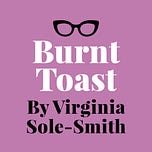


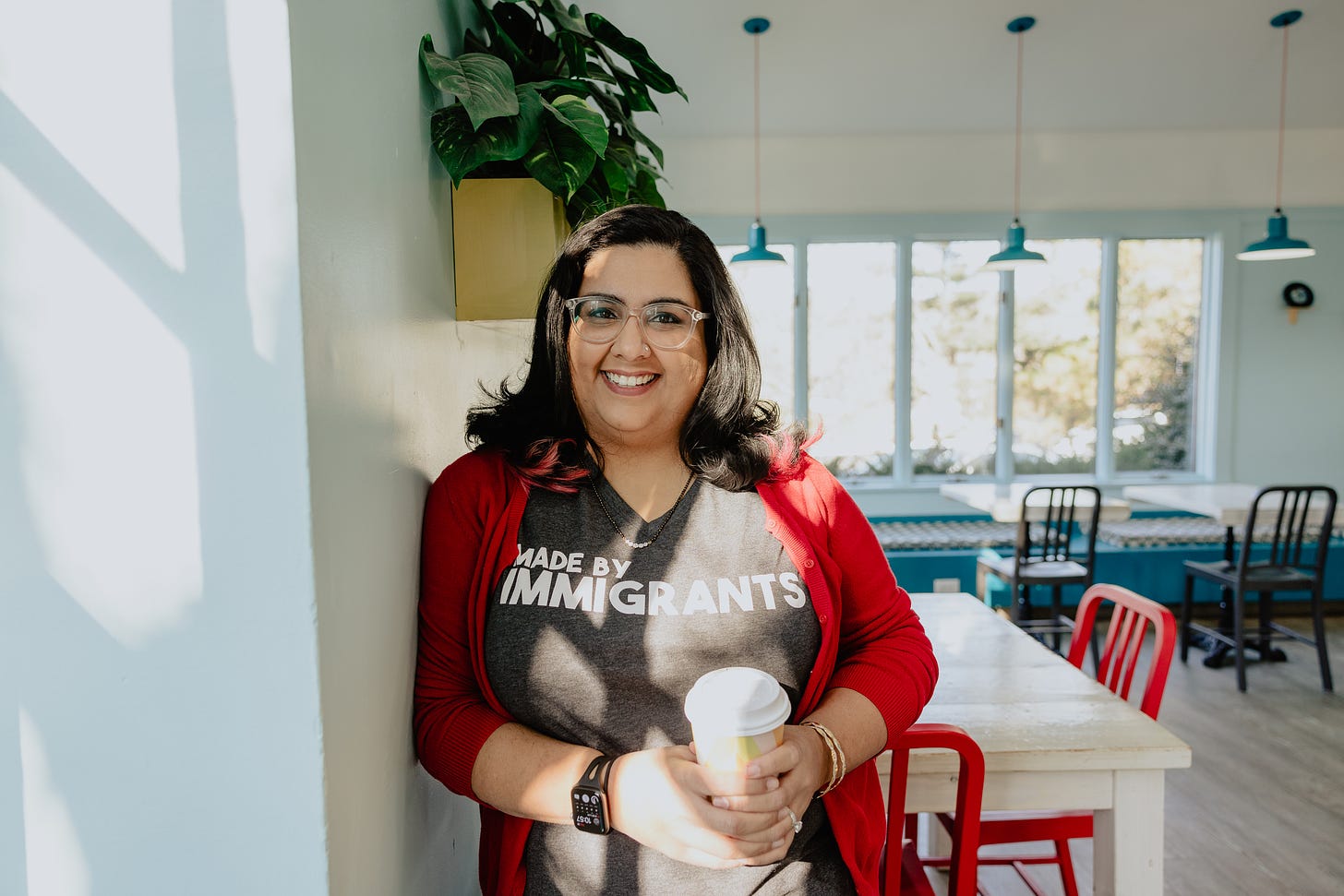
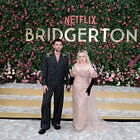

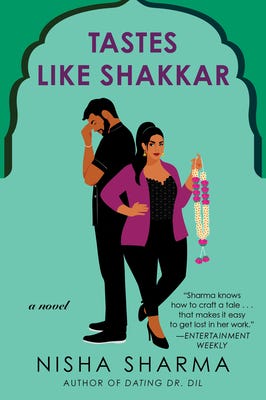
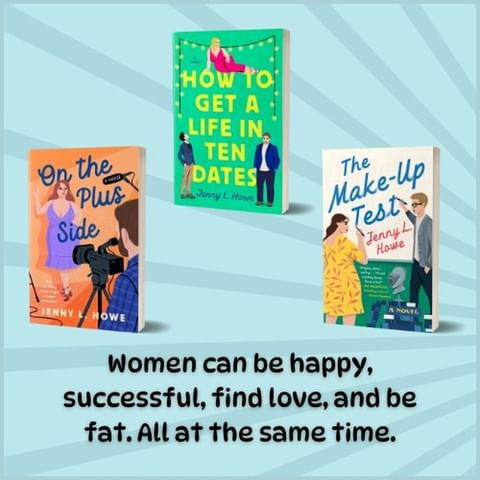
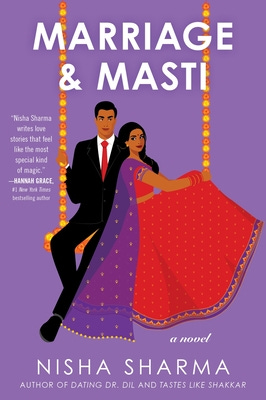
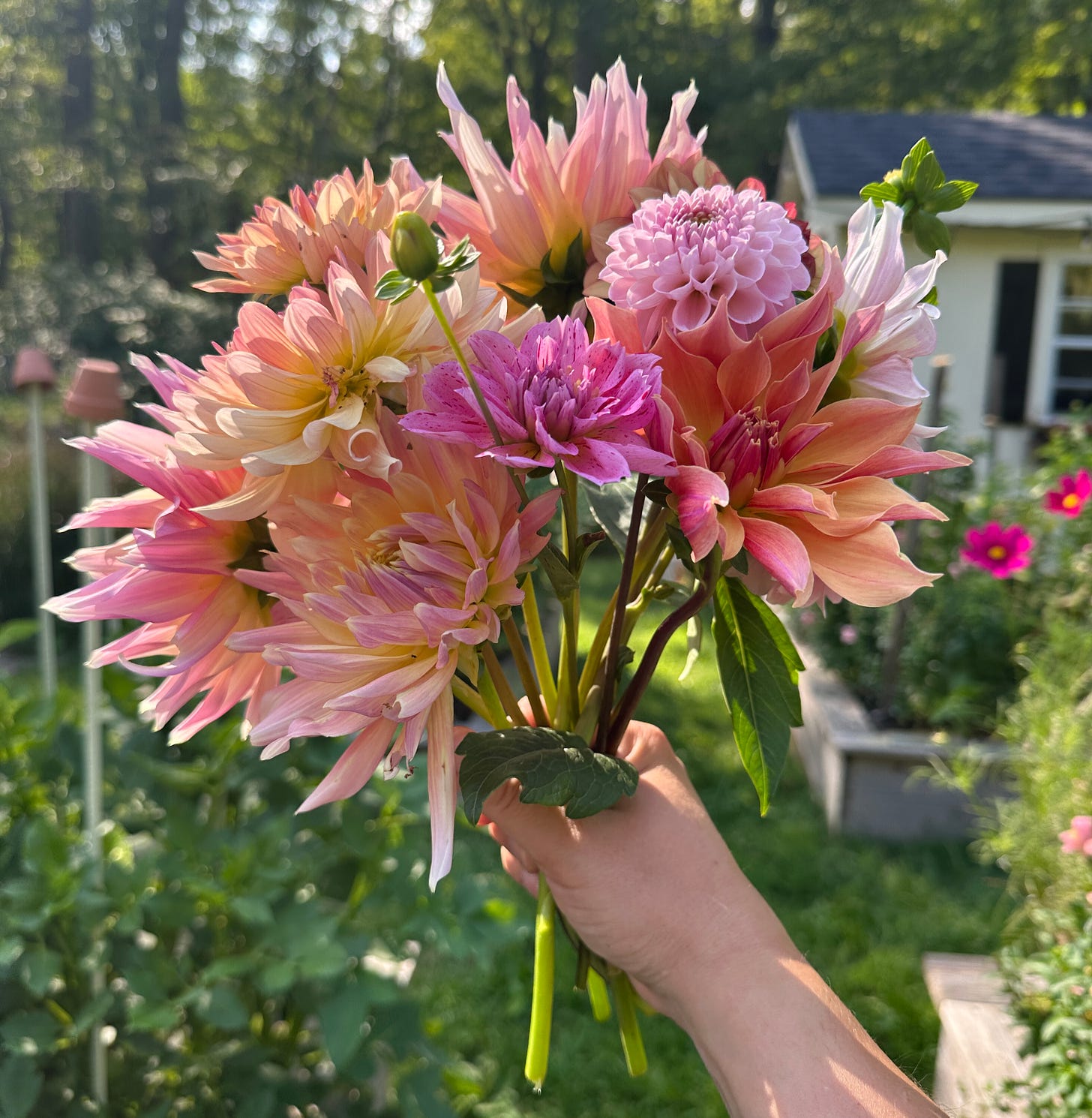










Share this post